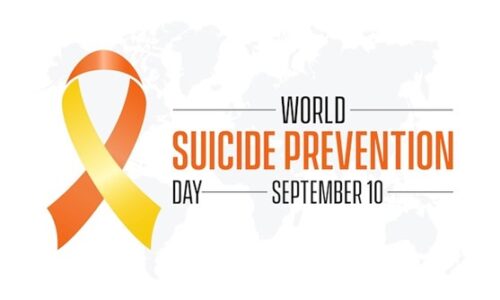Are you aware of Suicide rates in Western Australia (WA). What do we need to know? As Australia continues to battle an ongoing pandemic, financial crisis, and changing political context, mental health is at risk, as are suicide thoughts and behaviour. Oftentimes, the quality of work a person does has a direct effect on the quality of their psychological health. As a result of work-related stressors and adverse working environments, an individual’s health can be negatively affected, resulting in their poorer mental health. More than ever, Western Australian organisations must assess their role in preventing suicide deaths, as well as strategise about how to support suicide survivors after the death of a coworker. Managers and supervisors should take steps to promote mental health at work and establish plans to support employees with mental health conditions or at risk of suicide. Suicide Rates in Western Australia is high. Workplace CALM Suicide Awareness training in WA is of utmost importance. CALM Suicide Awareness training WA offers comprehensive education on recognizing warning signs, initiating conversations, and referring individuals to appropriate resources. By investing in this training, workplaces can create a supportive and understanding environment where employees feel comfortable seeking help. This not only improves employee well-being but also reduces the stigma associated with mental health issues. Ultimately, workplace CALM Suicide Awareness training WA has the potential to save lives and create a more compassionate society.
Suicide Rates Western Australia
In Western Australia last year, 47 young people aged 15 to 24 died from intentional self-harm, according to the Australian Bureau of Statistics.
Positively, the number of suicides across all age groups in Australia decreased in 2020.
In Australia last year, 3144 people died by suicide, down from 3139 the year before. There were 389 suicides in WA alone in 2021, compared to 415 in 2019.
Last year, suicide was the cause of nearly 40 percent of deaths among young adults in WA. The second leading cause of death in the age group was traffic crashes, which accounted for almost 17 percent of all deaths.
Complexity of suicide rates in Western Australia
There are lots of factors and pathways that lead someone to try to take their own life. Suicide prevention is a multidisciplinary endeavour, in which no single tactic stands out above the rest. It is possible to prevent many suicide deaths by implementing a range of strategies that aim to lower the risks and increase protective elements.
Efforts must be made to implement ongoing, research-based activities that promote mental health and wellbeing across WA in order to create a community that experiences advantages of mental health and wellbeing.
It has been stated that Western Australia will establish an education platform for the WA community to be better informed about suicidal behavior in accordance with its Suicide Prevention Framework 2025 and that anyone can become suicidal, anyone can lose someone to suicide, and everyone has a role to play in the prevention of suicide.
Workplace and Managers Role
Consequently, as a manager, have a good position to recognise if their employees are having difficulties and to take the initiative to assist them in getting assistance. A manager spends a great deal of time at work and has daily contact with his or her employees. During the course of their employment, managers become familiar with their employees, observe changes in their behaviour, and are given the opportunity to meet them at a critical time in their lives.
Furthermore, many workplaces offer Employee Assistance Programs (EAPs), which employees can use to find mental health professionals. By creating an environment that fosters communication, belonging, and respect, managers can also play a role in suicide prevention. Having a sense of belonging to a community can help employees feel better and help them avoid suicide.
Stigma surrounding mental illness can contribute to people remaining silent about their condition and preventing them from seeking assistance, particularly at work. It is important for managers to assure their employees that mental health problems are both real and treatable. The same principles apply to discussing mental health issues as they do to physical health issues.
Suicide Risk Among Employees
Make sure you are aware of problems that increase the risk of suicide. In some cases, your employees may be experiencing problems which may put them at risk for suicide. The risk of suicide is heavily influenced by a number of factors. It is important to note that some of the most significant examples are as follows:
- Past attempts at suicide
- Problems with alcohol and drugs
- Mental health disorders like depression and post-traumatic stress disorder (PTSD)
- Having access to a tool of self-harm
When you have more than one risk factor, their suicide rates, risk is higher in Western Australia. People who are already at risk may attempt suicide more often if they have a triggering event which causes shame or despair. An adverse event may include relationship problems or breakups, difficulties at work, financial hardships, legal difficulties, or deteriorating physical health. Despite the fact that the majority of people with risk factors will not attempt suicide, they should still be evaluated by a trained mental health professional.
Watch for signs that indicate an immediate suicide risk
Managers have a deep understanding of their employees. Be on the lookout for signs of immediate suicide risk. It is possible that certain behaviours may indicate that a person is at immediate risk of suicide. The following three points should prompt you to take immediate action:
- Discussing the desire to die or the act of killing oneself
- Getting a gun or looking for a way to kill oneself online
- Defining hopelessness as the feeling of being without a reason to live
It is important to recognise that other behaviours can also indicate serious risks, especially if they appear to be new, have increased, and/or appear to be linked to a painful event, loss, or change.
- A feeling of being trapped or in pain that’s unbearable
- Speaking of being a burden to others
- An increase in alcohol consumption or drug use
- Intense or agitated behaviour and have irresponsible behaviour
- An insufficient or excessive amount of sleep
- Having a feeling of withdrawal or isolation
- Experiencing rage or expressing a desire to seek revenge
- Alternating between extreme moods
Are there any training programs that managers can attend in WA?
It is not sufficient to simply acknowledge that a staff member needs assistance. Providing assistance to individuals who need it is the responsibility of a manager, supervisor, or team leader. Managers should learn how to deal with mental health concerns, develop strategies for challenging conversations, and develop action plans in advance of a crisis.
It is important for organisations to invest in suicide and mental health training in order to reduce the stigma associated with suicide. A company that prioritises mental health may be able to provide employees with better access to mental health support.
It is essential that managers take advantage of the training courses that are available to them. One of them is standard mental health first aid. Participants will learn how to initiate meaningful conversations with their employees as a result of this course.
CALM Suicide Intervention Skills and CALM Suicide Awareness. In addition to suicide prevention and intervention programs available to employers, employers can also begin suicide conversations with their employees through several suicide prevention programs.
WHS and Training Compliance Solutions, delivers elarning programs, standard mental health first aid, CALM Suicide Intervention Skills and CALM Suicide Awareness training WA.
Last but not least
It is important for managers to pay attention to important milestones that may be difficult for suicide survivors. Remembering suicide victims respectfully. Programs and policies that prevent suicide need to be invested in as part of this process.
While many companies recognise the importance of wellbeing, few have addressed suicide specifically. There is a need to develop policies and practices that specifically address suicide, since conventional well-being programs such as mindfulness and yoga may not be able to identify employees at risk for suicide. Organisations should invest in suicide prevention programs in order to provide support to their employees in times of crisis. In the event that even one person receives assistance, the investment will be worthwhile.
WHS and Training Compliance Solutions is a leading provider of CALM Suicide Awareness training WA. We understand the importance of creating a safe and supportive environment for individuals who may be struggling with thoughts of suicide. Our CALM Suicide Awareness training is designed to equip participants with the knowledge and skills needed to recognize the signs of suicide risk, provide appropriate support, and promote mental wellbeing. With our extensive experience in delivering training programs, we are committed to ensuring that organizations in Western Australia are equipped to handle the sensitive issue of suicide awareness. CALM Suicide Awareness training is crucial in raising awareness and reducing stigma surrounding mental health issues, and we are proud to offer this valuable training in Western Australia. Contact us today to learn more about our CALM Suicide Awareness training program.
If you are interested in onsite training in Western Australia, please contact us. We can also offer our courses online.












